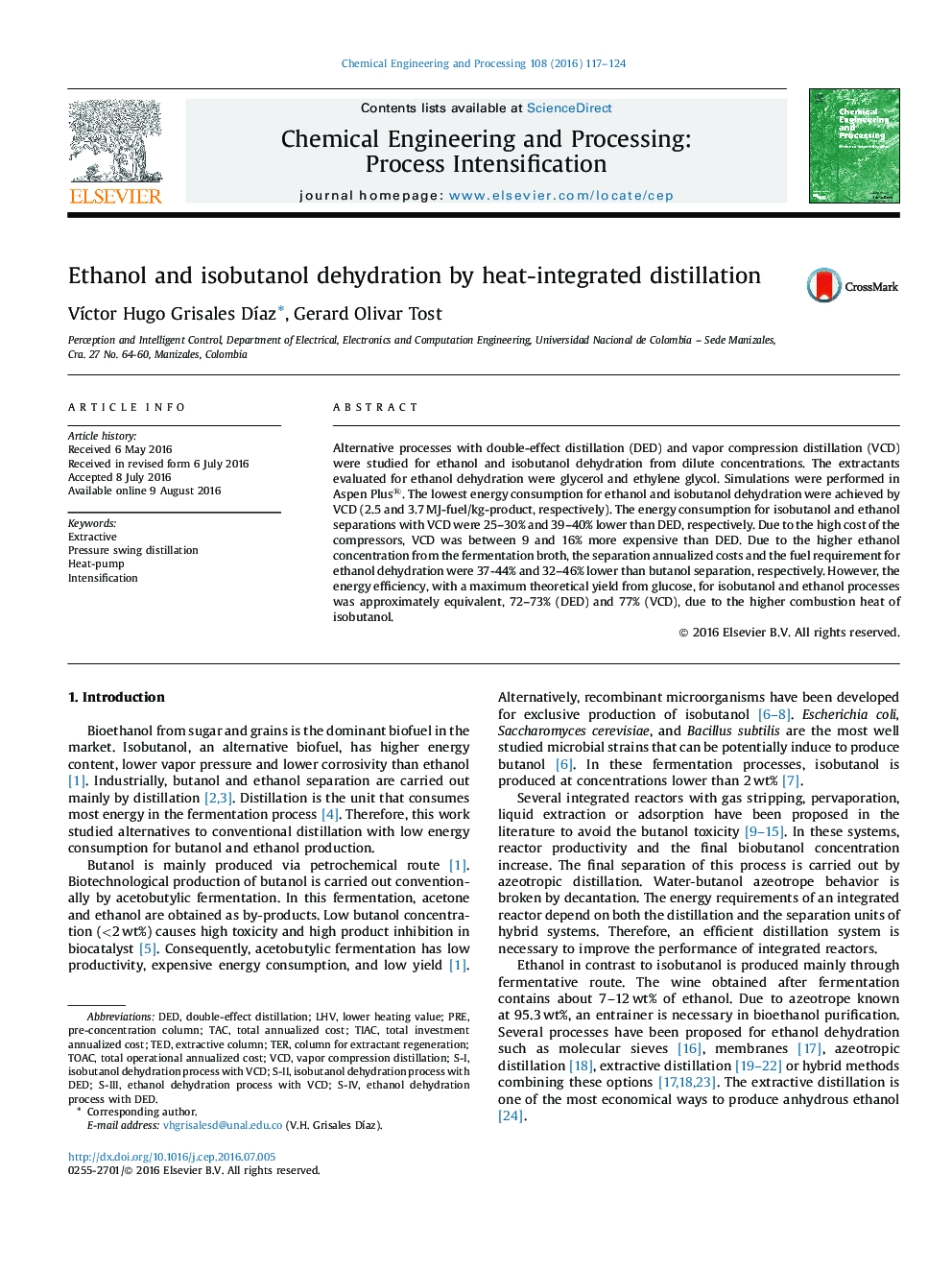| Article ID | Journal | Published Year | Pages | File Type |
|---|---|---|---|---|
| 687038 | Chemical Engineering and Processing: Process Intensification | 2016 | 8 Pages |
•Techno-economical study of ethanol and isobutanol dehydration was performed.•Isobutanol and ethanol efficiency of separation was equivalent.•VCD was the distillation system with lowest energy requirement.
Alternative processes with double-effect distillation (DED) and vapor compression distillation (VCD) were studied for ethanol and isobutanol dehydration from dilute concentrations. The extractants evaluated for ethanol dehydration were glycerol and ethylene glycol. Simulations were performed in Aspen Plus®. The lowest energy consumption for ethanol and isobutanol dehydration were achieved by VCD (2.5 and 3.7 MJ-fuel/kg-product, respectively). The energy consumption for isobutanol and ethanol separations with VCD were 25–30% and 39–40% lower than DED, respectively. Due to the high cost of the compressors, VCD was between 9 and 16% more expensive than DED. Due to the higher ethanol concentration from the fermentation broth, the separation annualized costs and the fuel requirement for ethanol dehydration were 37-44% and 32–46% lower than butanol separation, respectively. However, the energy efficiency, with a maximum theoretical yield from glucose, for isobutanol and ethanol processes was approximately equivalent, 72–73% (DED) and 77% (VCD), due to the higher combustion heat of isobutanol.
Graphical abstractFigure optionsDownload full-size imageDownload as PowerPoint slide
